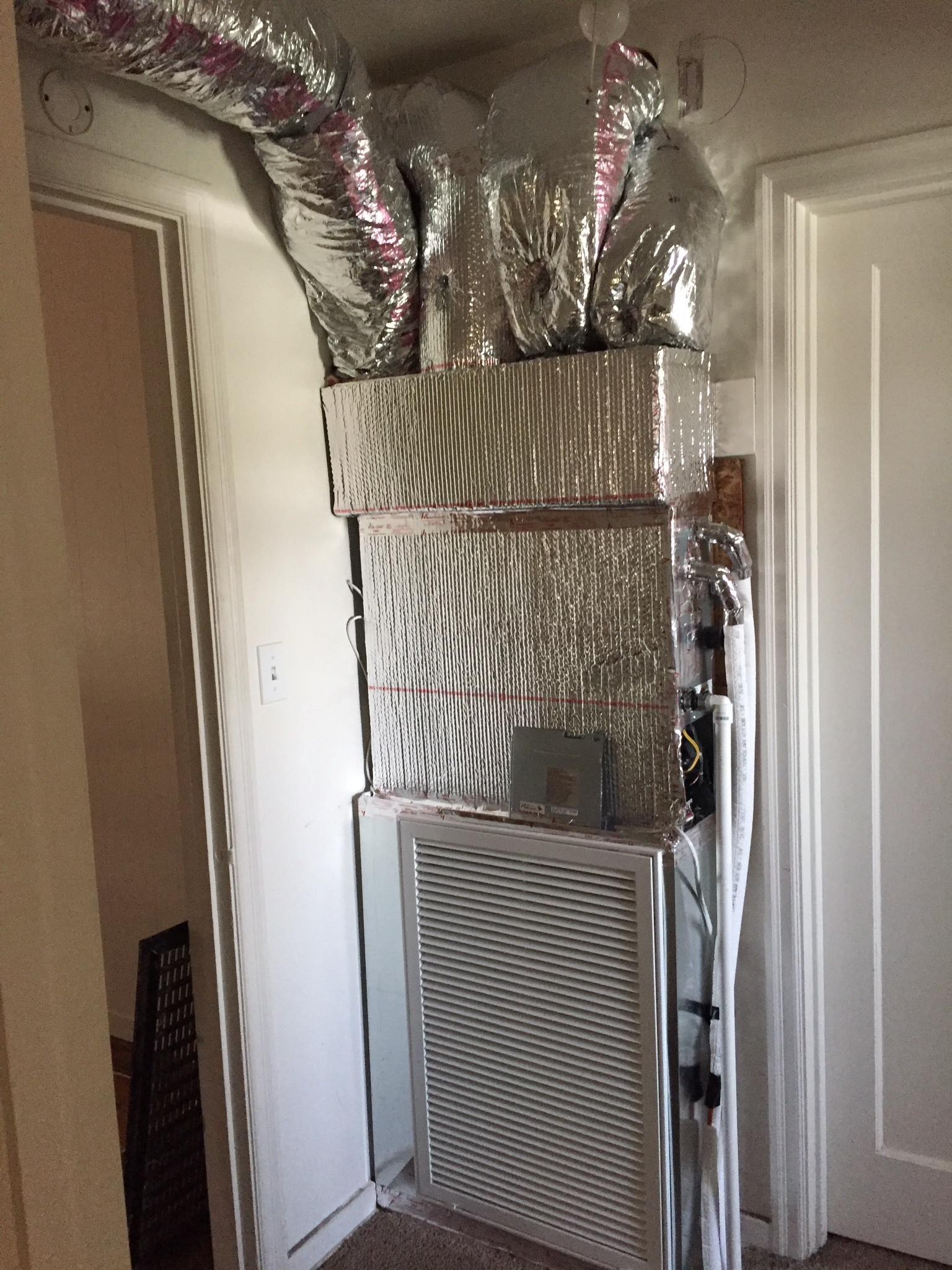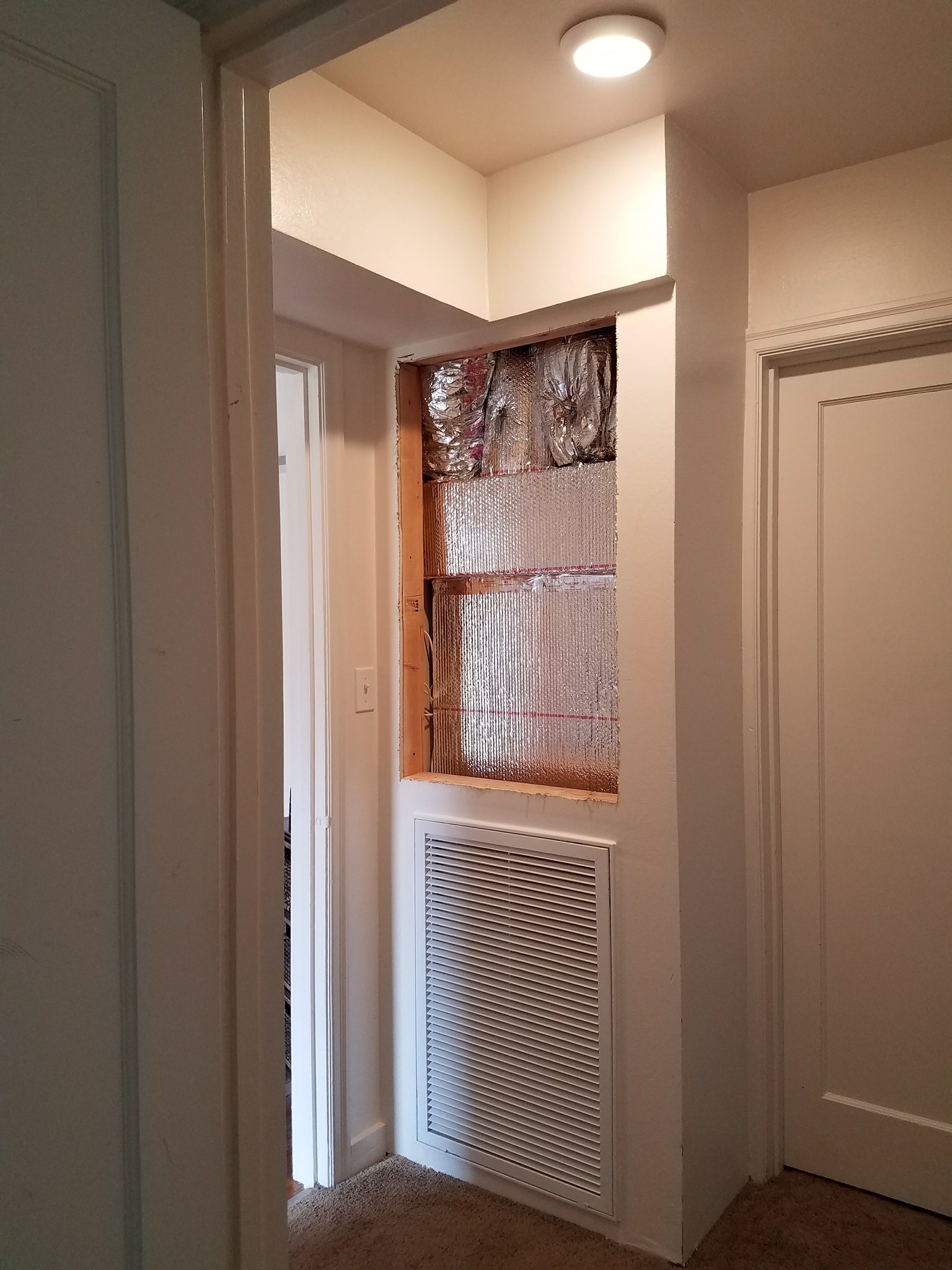There are floor mount cassettes, ceiling cassettes, mini-duct cassettes, etc that can all work with a multi-split compressor. It doesn't have to be high-wall coils. The most important thing is to size the heads/cassettes with their actual loads, something which very few contractors take the time (or even under stand how) to calculate. If you size it right it will be ultra-efficient, ultra quiet and very nice. If you blow it by a lot it can be an exepensive lesson.
Run a room-by-room load calculation using the most aggressive assumptions realistically possible on air tightness and R-values using
this online load tool. Resist the urge to under-shoot R-values, eg: If it's a 2x4 wall, unless you KNOW it has R11 batts, assume they are R13s or better.
Your location and the actual Fujistu equipment proposed would be useful. The cold-climate versions are more efficient and have more capacity than the standard versions, which would be important in some parts of CA than others.
I don't have a mini-split system in my own home (but will once the ludicrously oversized centeral air croaks- DIE, BEAST, DIE!!

), but I have specified them for dozens of people, most of whom are still talking to me (even some of my relatives who should know better.

)
The smallest 3 zone Fujitsu is a 2-tonner, and probably oversized for your actual loads. You might do better with a 1.5 ton 2-zone system runing a slim-duct cassette to server 2-4 doored off rooms, and a high wall or floor unit serving the more open area. But this may take some analysis of the floor plan along with the room load numbers. Most mini-split installers really don't have time for optimizing it- they would rather just install a head per room and move on.
There are whole houses your size in CA heated and cooled by a single 1.5 ton mini-ducted Fujitsu mini-split, with the ducts indoors rather than above the insulation in the attic. This installation in Berkeley is one such example:
The air handler here is mounted vertically- the wrapped box in the middle above the return grille and below the fatter plenum from which the flex ducts are run. Note they soffited the duct run going down the hall, but the other three are going directly to rooms. The whole thing takes up about 7-square feet of floor area, wall framing for that "utility closet" included.
But mini-duct cassettes can also be installed horizontally just below ceiling level of a closet to serve multiple adjacent spaces with short duct runs without the big build-out.
The advantage to going with a single-zone mini-split is that it will modulate up/down with the load very smoothly, with VERY stable room temperatures. With multi-zone systems the minimum modulation levels are about twice as high with a single zone, and the modulation is in 1/4 ton chunks up/down only modulating the outdoor compressor, not the individual heads/cassettes. The smoother load tracking gives the single zone units both an efficiency and comfort edge over their multi-zone cousins. The 1.5 ton slim ducted version can drop back to 3100 BTU/hr in both heating and cooling modes and ramps smoothly up/down with load. But the tri-zone AOU18RLXFZ can only dial back to 6800 BTU/hr heating/6100 BTU/hr cooling and only changes output in steps. If your whole house cooling load is 12000 BTU/hr (it really could be that low could be higher or lowe too), most of the time the individual zones on a tri-zone will be cycling on/off even under design conditions, whereas the 1.5 ton single zone would run almost constantly, usually at a very low, hyper-efficient modulation level.
Mitsubishi has some truly great single-zone high wall units in both half-ton (FH06NA) and 3/4 ton (FH09NA) sizes either of which can modulate down to 1600 BTU/hr heating, 1700 BTU/hr cooling. Even three of those can dial back to a lower total modulation level than any 3-zone multi-split. Compared to a half ton or 3/4 ton head that can't go lower than 6800 BTU/hr when married to a multi-split compressor it's like night and oranges, not even on the same comfort axis, despite being related technology. The multi-split solution isn't bad when sized right, but a right sized fully modulating single zone is just plain better, and often cheaper to install. (I see that all the time in my area- 3-zone multis quoted at several thousand more than three singles.) The down side of separate single zone units is that you have multiple outdoor units. The up-side is that you can turn one or more completely off when the loads are low.
Whatever. Get a good ball-park on the actual room-by-room load numbers first.


